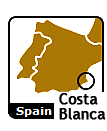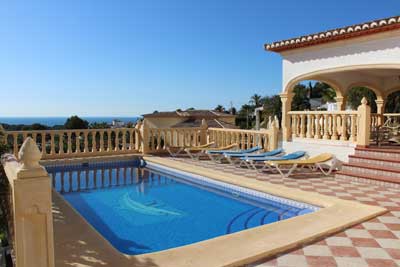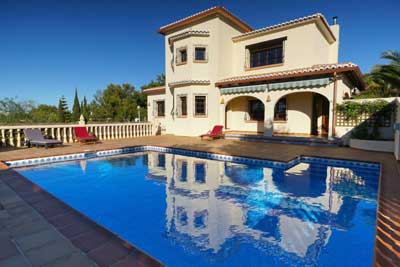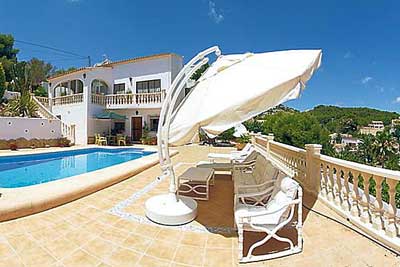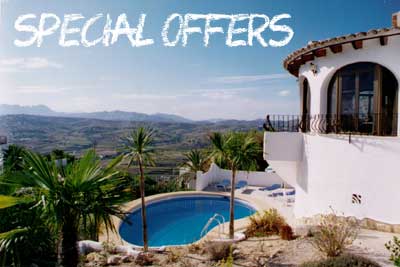Alicante
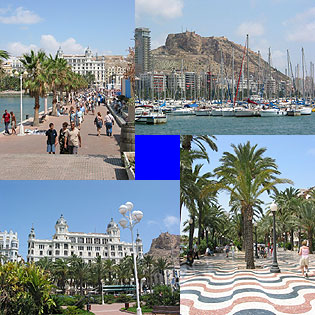
Alicante is the gateway to the Costa Blanca's popular holiday resorts that we cover, such Calpe , Moraira, Javea & Denia, as well as the larger resorts of Benidorm and Torrevieja. A busy port, it offers the best of both of worlds -classic Spanish heritage and modern culture. The city has a long history, even boasting Roman remains from the days when it was known as Lucentum. Today's visitors will find plenty to keep them occupied – from golden beaches and lush parks to designer shops and street markets. Add a mountain-top castle, beautiful churches and palaces and a charming old quarter and it all makes for an alluring taste of typical Spain.
Places to visit:
Castillo de Santa Barbara
Located on the summit of Mount Benacantil, overlooking the city and the Mediterranean Sea and boasting fantastic panoramic views, is the Castillo de Santa Barbara. With its high walls and domed turrets, it is home to many features, including the keep Torre de Homenaje, the Englishmen's bastion and the room of Felipe II. The castle also features a marvelous garden, stone passages, hidden passages and drawbridges.
Paseo Explanada de Espana
With four rows of palm trees set down in gardens that run almost half a kilometer, is the most emblematic and impressive promenade in Alicante. The pavement consists of an enormous mosaic of 6,600,000 tiles of tri-coloured marble and its geometric shapes reflect those in the harbour square. Marking the eastern end is a monumental fountain designed by Carlos Buigas in 1960.
Museo de la Asegurada
Located in the Old Quarter and originally used as a prison and munitions store, it was chosen to host a collection of contemporary art donated by Eusebio Sempere. It is also home to the most important examples of 20th Century Art, comprising of paintings, sculptures, mixed technique and lithographs by artists such as Picasso, Dali, Miro', Gris, Kandinsky, Chagall and lesser-known Spanish painters.
Isla de Tabarca
(Tabarca Island) is a guitar-shaped island located eleven miles south of Alicante, on the prolongation of the cape of Santa Pola, and is the largest and the only inhabited island of the Comunidad Valenciana. Completely flat, 1,800m long and 450m at its widest point, was once a refuge for Berber pirates who raided the coastal villages. It is now perfect for a day trip, where a medieval fort, a walled precinct and a fortified village can be found, alongside a pleasant little beach and fine seafood restaurants.
Regular boats leave the Alicante port area (around €17 return) and the journey takes 60 minutes each way. But if you’re not much of a seafarer and fancy an extra bit of tourism en route, head to historic Santa Pola, 20km south of the city. From here the boat takes half the time. But however you get to the island you’ll be rewarded on arrival with a protected natural and architectural landscape and a bevy of popular fish restaurants serving speciality caldero, a delicious fish stew. Cruceros Kontiki (Alicante port – Tabarca) and Barcos Baeza-Parodi (Santa Pola port – Tabarca)
Las Playas (beaches)
Alicante's pride are the beautiful beaches, amongst which are La Playa de San Juan, La Albufereta and La Albufereta. La Playa de San Juan is a 7km open beach of golden sand and is considered to be the finest in Spain; La Albufereta is a secluded and intimate beach and La Playa del Postiguet is an urban beach with an attractive promenade and flanked by palms. With their fine golden sands and high levels of cleanliness, year after year, they are awarded the Blue Flag of the European Union, the maximum guarantee of their consistent quality.
We have compiled a simple list of useful Spanish words and phrases that may be of help to you when sightseeing, dining out, shopping etc. Please visit Learn Spanish
Check out our up-to-date Villa Availability page.

